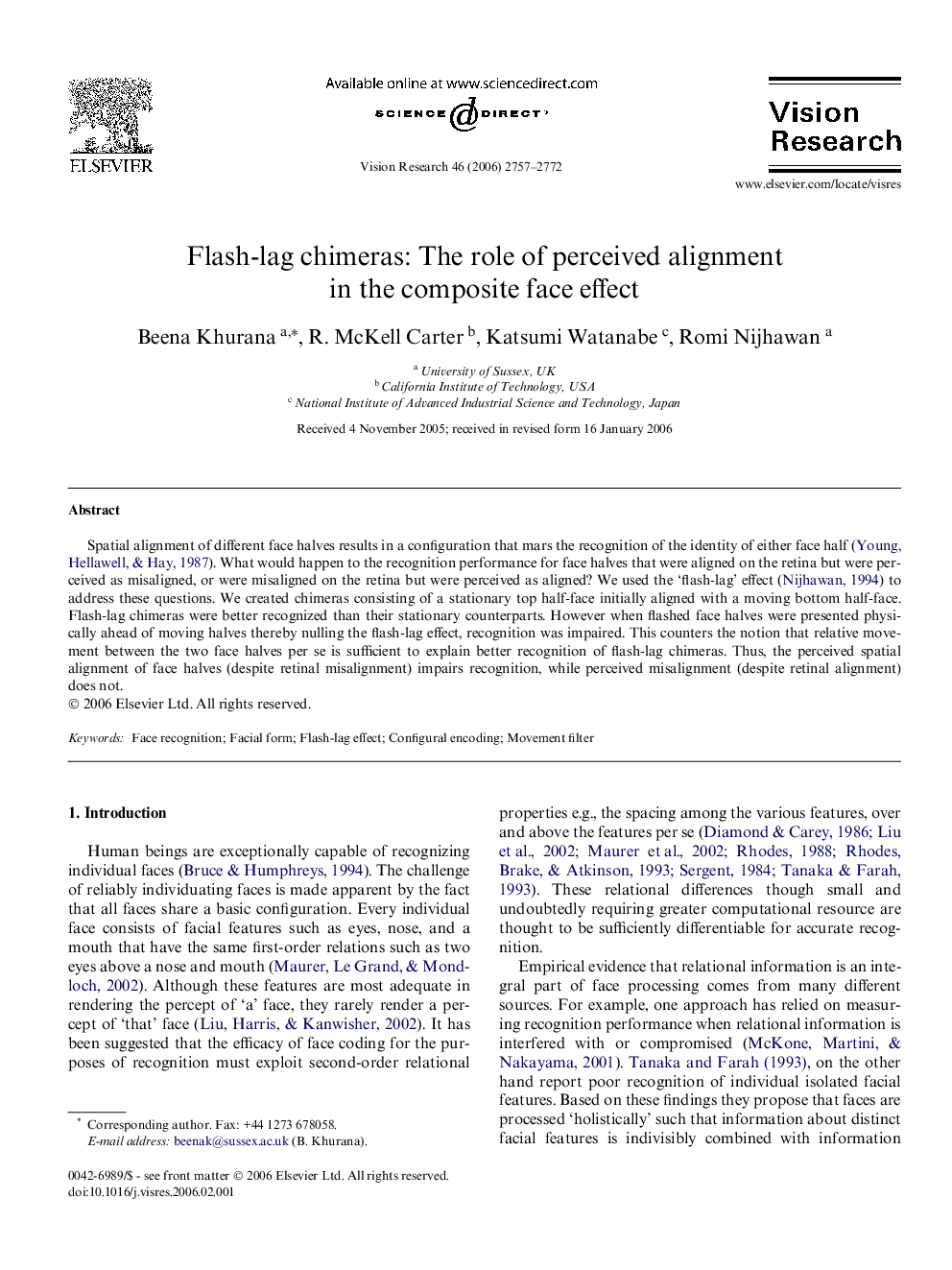| کد مقاله | کد نشریه | سال انتشار | مقاله انگلیسی | نسخه تمام متن |
|---|---|---|---|---|
| 4035600 | 1263536 | 2006 | 16 صفحه PDF | دانلود رایگان |

Spatial alignment of different face halves results in a configuration that mars the recognition of the identity of either face half (Young, Hellawell, & Hay, 1987). What would happen to the recognition performance for face halves that were aligned on the retina but were perceived as misaligned, or were misaligned on the retina but were perceived as aligned? We used the ‘flash-lag’ effect (Nijhawan, 1994) to address these questions. We created chimeras consisting of a stationary top half-face initially aligned with a moving bottom half-face. Flash-lag chimeras were better recognized than their stationary counterparts. However when flashed face halves were presented physically ahead of moving halves thereby nulling the flash-lag effect, recognition was impaired. This counters the notion that relative movement between the two face halves per se is sufficient to explain better recognition of flash-lag chimeras. Thus, the perceived spatial alignment of face halves (despite retinal misalignment) impairs recognition, while perceived misalignment (despite retinal alignment) does not.
Journal: Vision Research - Volume 46, Issue 17, September 2006, Pages 2757–2772